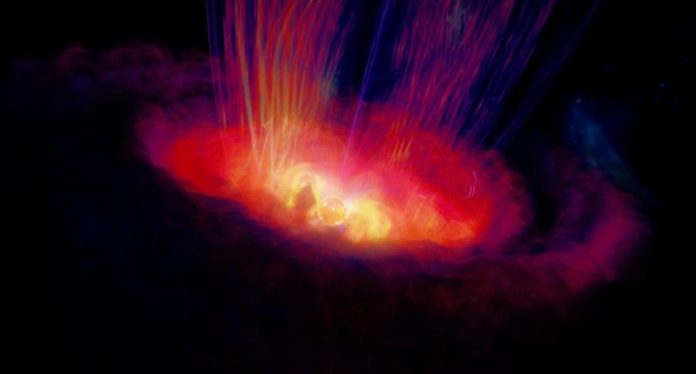
Do you know that our universe is full of mysterious rays of light that we can’t easily see from Earth?
Scientists have just made a startling discovery about one such type of light, called gamma rays, coming from young stars that are somewhat like our Sun was long ago.
The study is done by a group of researchers from Argentina and Spain and has been published in a respected science journal.
Firstly, what are gamma rays?
They’re a kind of light, but way more energetic than the light we can see. Because Earth’s atmosphere blocks them, they can’t be easily studied from here. So scientists use special satellites, like the Fermi satellite, to study them from space.
Since launching in 2008, this satellite has found that about 30% of gamma rays it detects come from unknown places in the sky.
Ph.D. student Agostina Filócomo and her team decided to explore this mystery. They focused on a part of space where stars are born, called NGC 2071, which is located in the big Orion B cloud of gas and dust.
There are at least 58 young stars in that region known as T Tauri stars. These stars are still forming and are known for suddenly changing in brightness.
The scientists noted that gamma rays were coming from the same direction as this star-forming region. The really surprising part?
There aren’t any other objects in that area that could be making these gamma rays. That led them to believe that these young T Tauri stars might actually be the source of this intense light!
But why would these stars emit such strong gamma rays? The answer might lie in something called “megaflares.”
These are super-powerful bursts of energy that come from the stars. Imagine our Sun having a fit and throwing out a bunch of energy. Now imagine that, but way, way stronger—that’s a megaflare. If our Sun did something like that now, it would be disastrous for life on Earth!
This discovery is important for many reasons. Understanding why these young stars emit gamma rays helps scientists figure out what our Sun and Solar System might have been like in their early days. Gamma rays could also affect the disks of gas and dust around these young stars, where new planets might form. This means understanding these gamma rays could also help us understand how planets, like Earth, are born and evolve.
Agostina Filócomo, the lead researcher, said, “Finding out where these mysterious gamma rays come from is a big step for astronomy. It also helps us understand the early life of stars and how planets form. This could teach us about how our Sun and even our planet came to be.”
So, the next time you look up at the night sky, just think: some of those stars might be emitting powerful rays that we’re just beginning to understand, and they could hold the secrets to our own beginnings.
The study was published in Monthly Notices of the Royal Astronomical Society.
Follow us on Twitter for more articles about this topic.
Source: Royal Astronomical Society.



